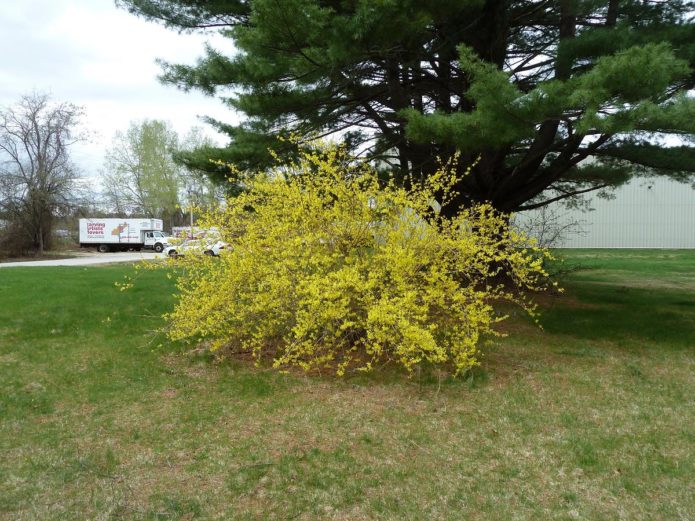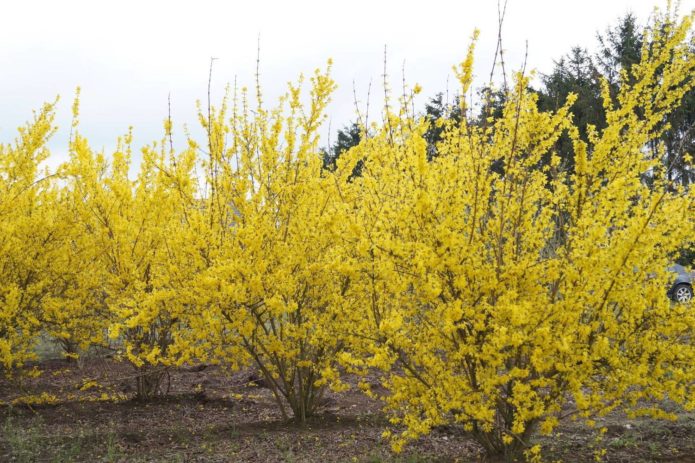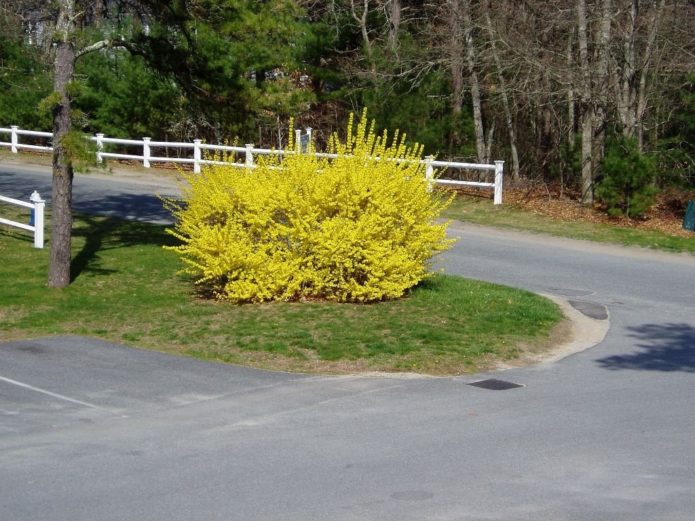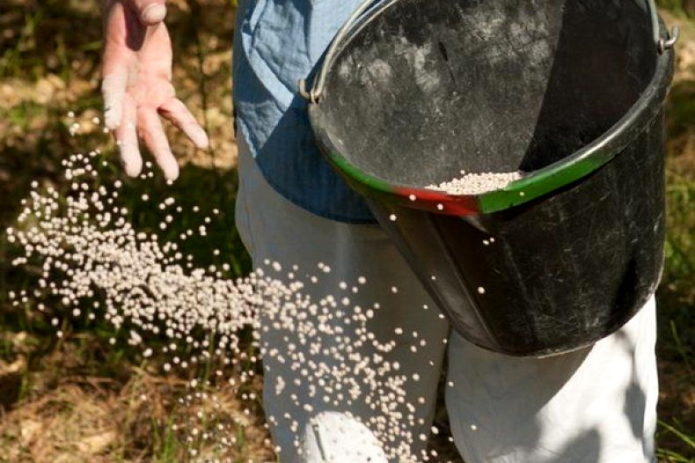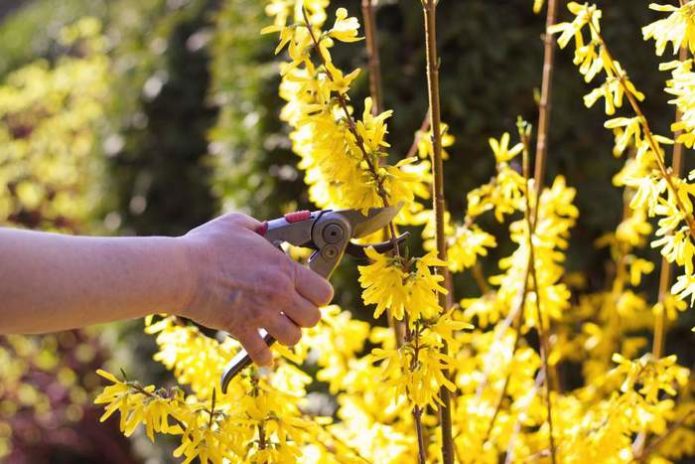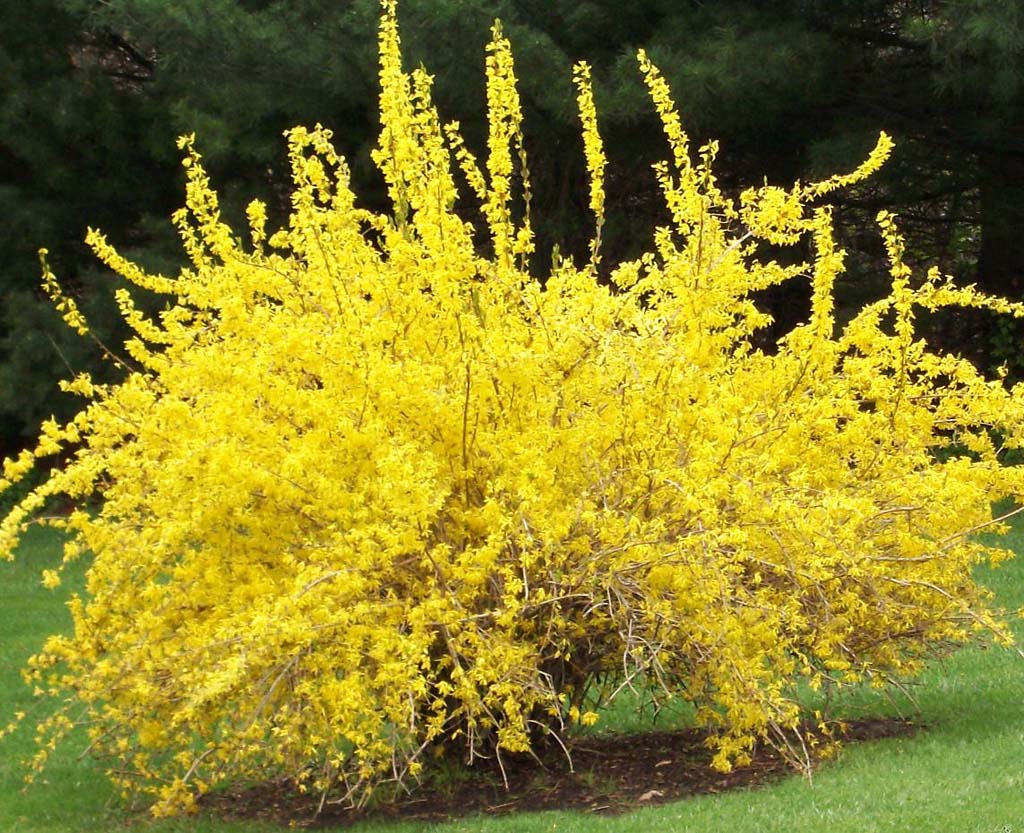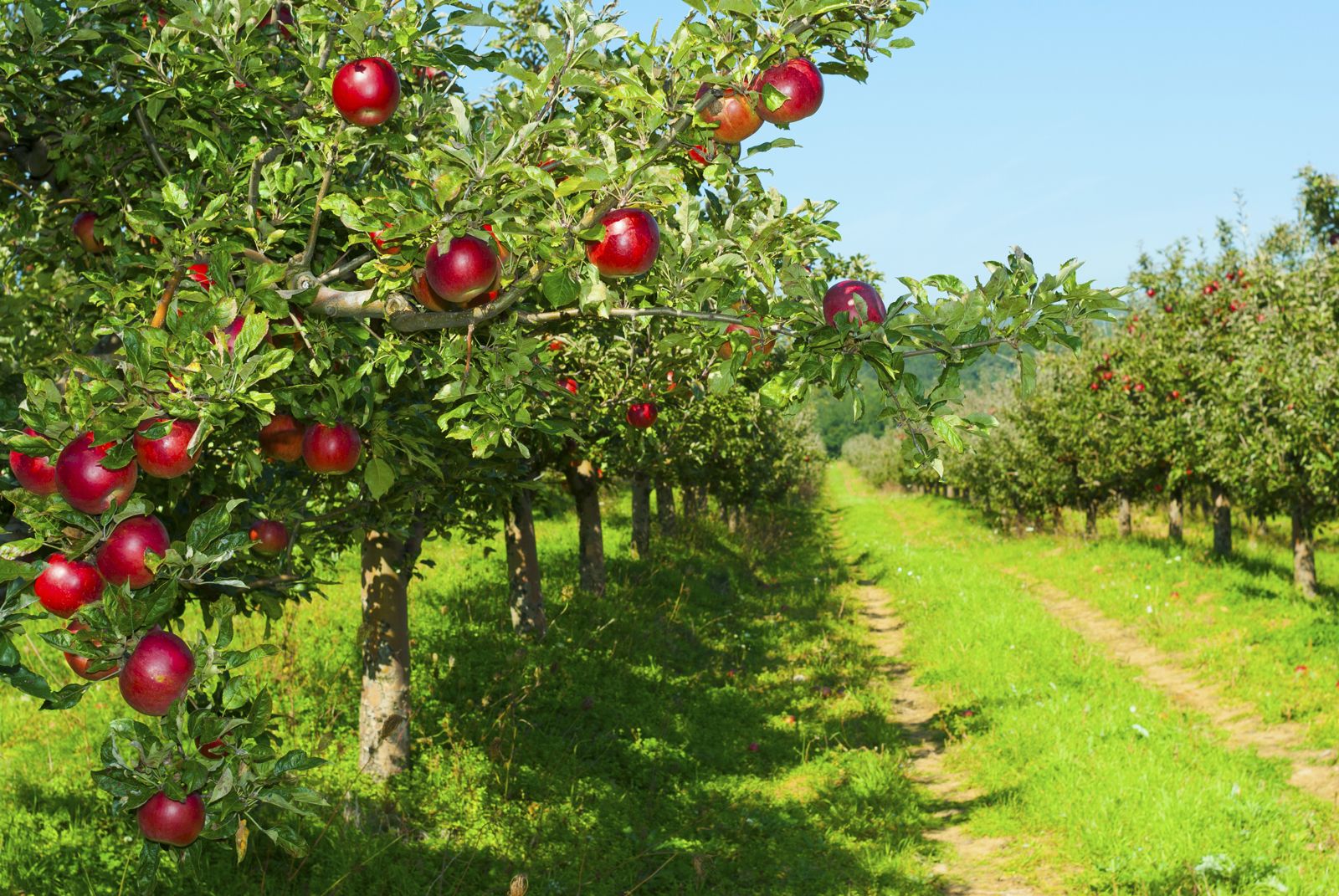One of the popular flowering deciduous shrubs today is forsythia. Planting and caring for this beautiful and undemanding plant in the Moscow region is not too difficult, but it presupposes compliance with the basic agrotechnical rules. Only in this case the garden culture will retain its decorative effect as long as possible.
Content
Features of growing forsythia as a perennial garden crop
Currently, a representative of the Olive family is considered the most real decoration of squares, streets and gardens in many European countries, where such plants serve as a kind of symbol of the arrival of the spring period.
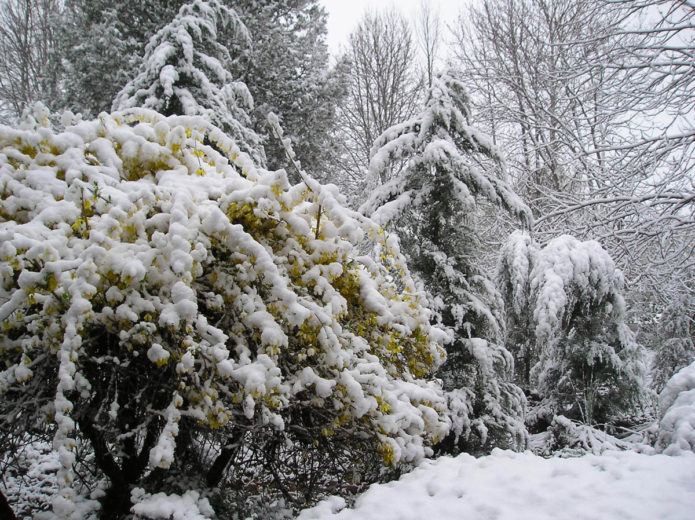
Some varieties of forsythia have sufficient frost resistance to be suitable for cultivation near Moscow
A distinctive feature of this deciduous shrub is its early flowering, as well as the possibility of cultivation as an ornamental garden perennial. At the same time, preparing the plant for winter involves the implementation of some mandatory measures and the shelter of less winter-hardy varieties.
Popular varieties that are optimal for the Moscow region
With the right choice of the variety, forsythia is perfect for cultivation in the soil and climatic conditions of the Moscow region. In this case, preference should be given only to unpretentious plants with sufficient frost resistance.
Hanging forsythia (Forsythia suspensa)
A shrub three-meter plant with thin and drooping shoots that form a lush crown. Foliage is simple or trifoliate. Flowers of bright yellow color are collected in bundle inflorescences. The best varieties:
- Nymans,
- Taff's Arnold,
- Hewitt's Gold,
- Elanor,
- Melissa,
- Aurea,
- Cynthia Barber.
Forsythia ovoid (Forsythia ovata)
One of the most winter-hardy varieties with a height of 1–2 m. The plant is distinguished by dense and spreading shoots with pointed and large foliage of rich green color. In winter, the leaves take on a decorative scarlet-red hue. The diameter of the golden yellow flowers is 20 mm. The best varieties:
- Ottawa,
- Tetra Gold,
- French's Florens.

Forsythia ovoid can be susceptible to aphids, therefore it is necessary to protect young shoots, it is possible with the help of folk remedies
Forsythia intermediate (Forsythia x intermedia)
The artificially bred hybrid form is characterized by rather large sizes, as well as thick and oval-elongated leaves. Flowers of group type, bright yellow color. The hybrid is perfectly adapted for growing in regions with moderate climatic conditions, has drought resistance and frost resistance. The best varieties:
- Spring Glory,
- Lynwood Variety,
- Week-End,
- Fiesta,
- Minigold,
- Primulina.
Forsythia dark green (Forsythia viridissima)
A tall shrub plant with erect branches and simple, oblong dark green foliage, which does not fall off for a long time with the onset of autumn. Flowers are bright yellow, collected in bunches. This species needs a reliable winter shelter.
The best varieties:
- Bronxensis,
- Kumson,
- Seoul Gold.
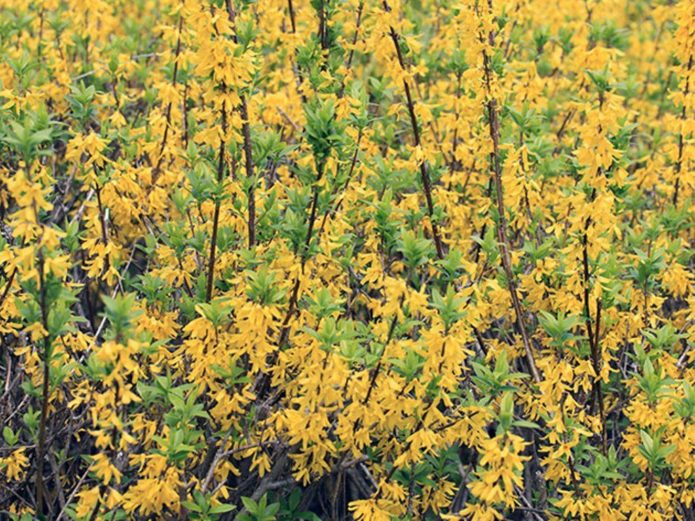
Forsythia is dark green less bright than its rich yellow congeners, but at the same time the leafy-floral part of it is denser
Forsythia Sieboldii
The frost-resistant form is distinguished by short stature, drooping or creeping thin shoots that can easily tolerate some shading. The flowers are dark yellow in color, with petals bent backward. With the onset of the autumn period and in preparation for winter, the shoots of a shrub perennial are removed from the trellis and covered with fallen dry leaves or spruce branches.
Landing methods in the Moscow region
It is possible to breed perennials on the site with seed material and vegetatively, using bush division or cuttings.
Reproduction by seeds is not the best option in the conditions of the Moscow region. When choosing this method, the seed is kept for a couple of months at a temperature of 2–5 ° C, after which it is sown in the spring or in the early autumn period. After a year, the final part of the taproot is removed, which easily stimulates branching of the root system. Three-year-old seedlings are planted in a permanent place.
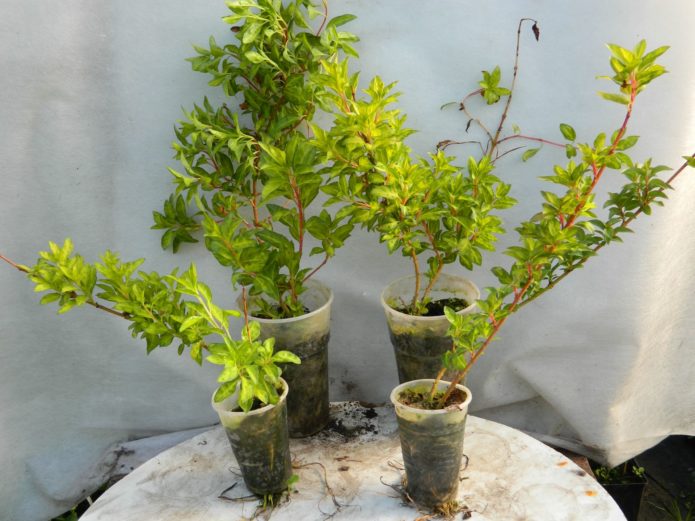
It is not worth rushing to plant young animals before May, as young bushes may die from recurrent frosts
The most effective and fastest way of reproduction is by cuttings of a shrub perennial. Planting material is cut from the last decade of May to the end of June. The shoots don't need to be old, and the entire rooting process takes about four weeks. In this case, it is necessary to use a film cover and maintain the temperature within the range of 22-25 ° C.
Compliance with the rules of cuttings ensures the rooting rate of decorative perennials at the level of 95–99%.
After a couple of years, in the spring, the plants are transplanted to a permanent place.
Forsythia care in the Moscow region
It is necessary to grow an ornamental shrub in areas that are loose and fairly light in soil composition. The soil should not be acidic - in this case, before planting the plant, the composition of the soil mixture must be improved by introducing dolomite flour or any other substances that contribute to a decrease in acidity.
How to care during growth: watering, fertilizing, pruning and feeding
In early spring, just before the beginning of flowering, perennial shrubs are obligatorily provided with fertilizing with mineral fertilizers at the rate of 250–270 g per square meter of planting area.
With sufficient precipitation, forsythia does not need additional irrigation measures. All cultivated varieties are quite well adapted to dry weather and do not tolerate excess moisture. After watering or heavy rain, the soil around the ornamental plant must be loosened and a small amount of compost added.
It is very important to carry out regular removal of weeds. A good result is provided by mulching the soil around the plants with rotted manure, which is a highly effective top dressing.
Forsythia belongs to the category of ornamental perennials, resistant to many plant parasites and diseases. At the first signs of wilting, the aerial part of the culture is sprayed with the preparation "Tsineb" or "Fundazol". The fight against nematodes involves the disinfection of the soil by means of "Carbation".The bushes affected by bacteriosis are uprooted and burned.
Anti-aging pruning is carried out as the crown grows.
Care after the season: how to prepare a plant for the winter near Moscow
After the deciduous shrub fades and goes to the stage of laying the next flower buds, it is recommended to fertilize with Kemira-Universal at the rate of 100 g for each square meter of soil. Autumn pruning involves removing dead and dead branches, as well as too long and low-lying branches. You should also get rid of intertwining and thickening shoots.
Before sheltering for the winter, the plant must be watered abundantly, after which the soil around the trunk must be mulched with dry foliage and needles. The minimum layer of such mulch should be 10–12 cm. Forsythia branches are gently bent to the soil and pinned. At the final stage of pre-winter preparation, the shrub is covered with spunbond.
Feedback from the practitioner on video: how to grow forsythia in the Moscow region
A flowering deciduous shrub native to the countries of East Asia in recent years is increasingly cultivated as an ornamental perennial in the Moscow region. In this case, the choice of an unpretentious variety and strict adherence to the technology of growing horticultural crops allows to guarantee abundant and early flowering.
